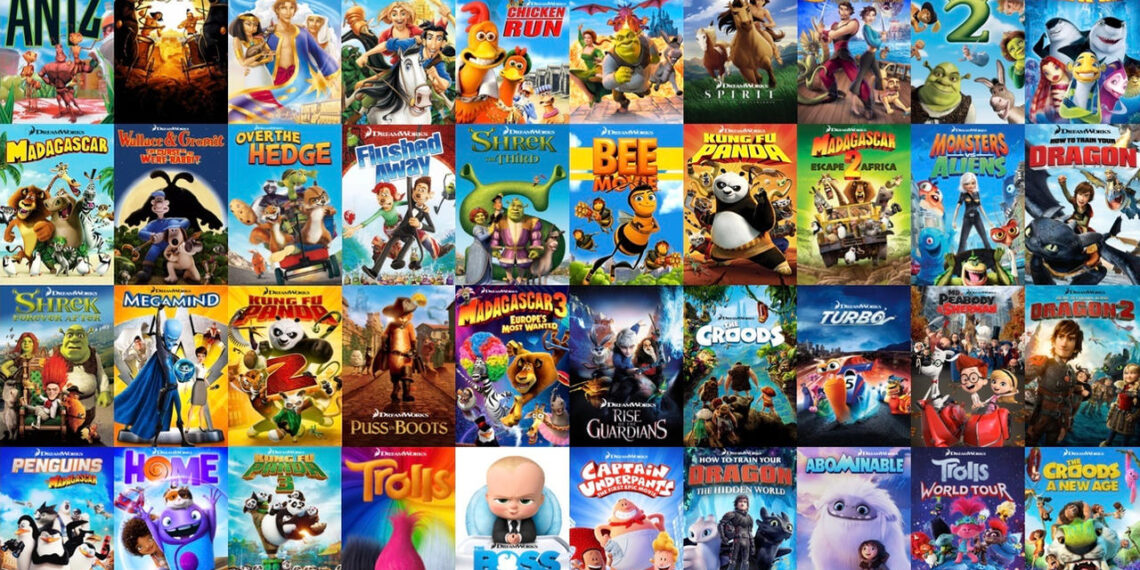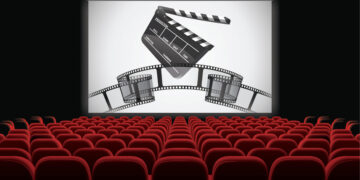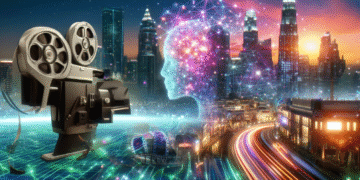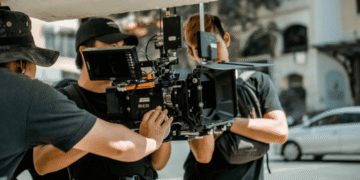The Evolution of Animation: From Hand-Drawn Frames to Digital Masterpieces
Animation, the art of bringing inanimate objects to life, has undergone a remarkable transformation, evolving from painstakingly hand-drawn frames to sophisticated digital creations that captivate audiences worldwide.
| Milestone | Year | Description | Impact |
|---|---|---|---|
| First Animated Feature | 1937 | Snow White and the Seven Dwarfs, the first full-length cel-animated feature film. | Established animation as a viable and profitable form of filmmaking. |
| Introduction of CGI | 1970s | Early use of computer-generated imagery in films like Westworld. | Began the shift towards digital animation and special effects. |
| Pixar’s Toy Story | 1995 | The first fully computer-animated feature film. | Revolutionized animation, demonstrating the potential of CGI for creating expressive characters and realistic worlds. |
| Motion Capture Technology | 2000s | Increased use of motion capture to record actors’ movements for realistic character animation. | Allowed for more nuanced and lifelike performances in animated films, blurring the lines between animation and live-action. |
| Real-time Animation | 2020s | Advancements in real-time rendering engines allow for interactive and dynamic animation workflows. | Enables faster iteration and collaboration in animation production, opening up new possibilities for live animation and virtual production. |
Data Source: Various sources including film history archives and animation industry reports, 2024.
1. The Era of Hand-Drawn Animation
The origins of animation lie in hand-drawn techniques, where each frame was meticulously created by artists. Pioneers like Winsor McCay and Walt Disney established fundamental principles of animation, using techniques such as cel animation to bring characters and stories to life. This labor-intensive process required immense skill and dedication, resulting in timeless classics that continue to inspire animators today. The charm of hand-drawn animation lies in its inherent imperfections and artistic expression, creating a unique visual style that is difficult to replicate with digital tools.
2. The Dawn of Computer-Generated Imagery (CGI)
The introduction of CGI marked a turning point in animation history. Early experiments with computer graphics in the 1970s gradually paved the way for more sophisticated techniques. Films like Tron (1982) showcased the potential of CGI, although limitations in technology meant that it was initially used sparingly. As computer power increased, so did the possibilities for creating realistic and complex animated sequences. The transition to CGI allowed for greater control over the animation process and opened up new avenues for visual storytelling.
3. The Rise of 3D Animation
The release of Pixar’s Toy Story in 1995 revolutionized the animation industry. As the first fully computer-animated feature film, it demonstrated the power of 3D animation to create believable characters and immersive worlds. This breakthrough inspired countless animators and studios to embrace CGI, leading to a surge in 3D animated films. Advancements in software and hardware have continued to push the boundaries of 3D animation, enabling increasingly realistic and visually stunning results.
4. Motion Capture and Performance Animation
Motion capture technology has enabled animators to capture the nuances of human movement and translate them into animated characters. By recording the performances of actors, animators can create more realistic and believable character animations. This technique is particularly useful for creating complex action sequences and emotional performances. Performance capture has become an integral part of modern animation pipelines, allowing for a greater level of realism and expressiveness in animated films.
5. The Future of Animation: Real-Time and AI
The future of animation is being shaped by advancements in real-time rendering and artificial intelligence (AI). Real-time animation allows for interactive and dynamic workflows, enabling animators to see their creations come to life instantly. AI is being used to automate certain aspects of the animation process, such as character rigging and motion tracking, freeing up animators to focus on more creative tasks. These technologies promise to further accelerate the animation production process and unlock new possibilities for storytelling.
Exploring Dimensions: Comparing 2D and 3D Animation Techniques
Discover the contrasting realms of 2D and 3D animation, each offering unique visual styles and production workflows that cater to different artistic visions.
| Feature | 2D Animation | 3D Animation |
|---|---|---|
| Creation Process | Drawn frame-by-frame, digitally or traditionally | Modeled, textured, and rigged in software |
| Visual Style | Flat, often hand-drawn appearance | Depth, volume, and realistic textures |
| Production Time | Can be faster for simpler projects | Generally longer, more complex pipelines |
| Software Examples | Adobe Animate, Toon Boom Harmony | Blender, Maya, Cinema 4D |
| Common Applications | Cartoons, anime, explainer videos | Feature films, video games, commercials |
1. The Art of Flatness: 2D Animation
2D animation, often associated with classic cartoons, involves creating movement through a sequence of static images. These images, drawn by hand or using digital tools, are rapidly displayed to simulate motion. Keyframes define the start and end points of an action, while “tweening” fills in the intermediate frames. 2D animation excels in stylized visuals and expressive character designs. Its relative simplicity can make it a cost-effective option for projects with limited budgets. The focus is often on clear lines, vibrant colors, and exaggerated movements, contributing to its unique charm.
2. Sculpting Reality: 3D Animation
3D animation brings virtual objects to life within a three-dimensional space. Animators create models, define their surfaces with textures, and build “rigs” – internal skeletons that allow for controlled movement. Unlike 2D, 3D animation offers a sense of depth and realism. Lighting and camera angles play crucial roles in shaping the final visual. While the initial setup requires significant time and expertise, 3D animation allows for greater flexibility in revising scenes and reusing assets across multiple projects. This technique is widely used in films, games, and advertising.
3. Workflow and Tools: A Comparative Glance
The workflows for 2D and 3D animation diverge significantly. 2D animation relies heavily on drawing skills and a strong understanding of timing and posing. Software like Adobe Animate and Toon Boom Harmony provide tools for creating, organizing, and animating 2D assets. 3D animation, on the other hand, demands proficiency in 3D modeling, texturing, rigging, and lighting. Software such as Blender (free and open-source), Maya, and Cinema 4D offer comprehensive toolsets for these tasks. The choice of workflow depends on the desired aesthetic, budget, and the skills of the animation team.
The Art of Stop Motion: Breathing Life into Inanimate Objects
Stop motion animation, a captivating technique, grants inanimate objects the illusion of life through meticulously photographed incremental movements. Each frame painstakingly captured contributes to a seamless sequence when played in rapid succession, creating a magical cinematic experience.
1. The Meticulous Process
Stop motion is a labor-intensive art form. Animators manipulate physical objects – puppets, clay figures, or even everyday items – posing them slightly differently for each frame. A single second of finished animation can require anywhere from 12 to 24 individual photographs, highlighting the dedication and patience required.
2. Diverse Materials and Styles
The beauty of stop motion lies in its versatility. Animators employ a wide array of materials, each lending a unique aesthetic. Clay animation (claymation) offers malleability, puppet animation provides intricate character designs, and cut-out animation uses flat materials for a distinctive graphic style.
3. Notable Stop Motion Films
Many iconic films have utilized stop motion to great effect. From the classic adventures of “King Kong” (1933) to the enchanting worlds of “Coraline” (2009) and the charming humor of “Wallace & Gromit,” stop motion has consistently delivered memorable cinematic moments.
4. Modern Innovations in Stop Motion
While the core principles remain the same, stop motion has embraced technological advancements. Digital cameras offer higher resolution and immediate feedback, while computer software assists with compositing and removing rigs, streamlining the animation process and expanding creative possibilities.
Motion Capture Technology: Bridging Reality and Animation
Motion capture technology breathes life into animated characters by recording the movements of real-life actors, translating them into digital data, and applying them to 3D models. This fusion creates incredibly realistic and nuanced performances in animation.
1. The Basics of Motion Capture
Motion capture, often shortened to mocap, utilizes sensors attached to an actor’s body to track their movements. These sensors, which can be optical markers, inertial measurement units (IMUs), or magnetic trackers, transmit data to a computer. The computer then processes this data to create a digital skeleton that mimics the actor’s performance. This digital skeleton is then applied to the animated character, transferring the actor’s movements, expressions, and even subtle nuances to the virtual character.
2. How Motion Capture Enhances Realism
Motion capture significantly enhances realism in animation by capturing the natural movements and physical characteristics of actors. Unlike traditional animation methods, which rely on animators to manually create each movement, motion capture directly translates real-world actions into the digital realm. This results in more believable and lifelike character performances, especially in complex actions like fighting, dancing, or subtle facial expressions.
3. Types of Motion Capture Systems
There are several types of motion capture systems, each with its own advantages and disadvantages. Optical systems use cameras to track markers placed on the actor, providing highly accurate data but requiring a controlled environment. Inertial systems use sensors that measure acceleration and angular velocity, offering greater freedom of movement but potentially lower accuracy. Magnetic systems use magnetic fields to track sensors, providing real-time data but being susceptible to interference.
4. Applications Beyond Animation
While motion capture is widely used in animation for film, television, and video games, its applications extend far beyond entertainment. It is also used in sports biomechanics to analyze athletic performance, in medical rehabilitation to track patient progress, and in robotics to control robot movements. The versatility of motion capture technology makes it a valuable tool in various fields where precise movement tracking is crucial.






